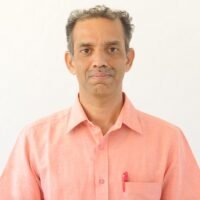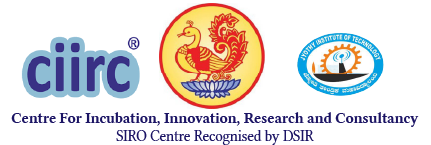Overview
Carbon dioxide capture and storage (CCS) is a mid-term commercially viable technological option to reduce anthropogenic GHG emissions and best applied to large point sources including fossil fuel power plants, fuel processing plants, and industrial plants (iron and steel, cement, and petrochemicals). CO2 capture, its transportation, and storage are three main steps in CCS technology. Among these, CO2 capture is very expensive and, hence, considered the most critical one. CO2 can be captured using different techniques, including absorption, membranes, cryogenic distillation systems, and adsorption. In recent years, CO2 adsorption onto solid sorbents has been widely investigated as a means of an alternative to benchmark absorption technology. The selection of a suitable CO2 adsorbent is a daunting task, as the CO2 needs to be captured from large point sources under different conditions of operation and feed-gas composition. Evidently, each capture scenario presents unique requirements and constraints. The extensive review of literature reveals that numerous classes of solid sorbents have been explored for effective CO2 capture. However, each of these classes of solid sorbents presents its own advantageous characteristics and intrinsic limitations as well, providing scope for further research.

Microwave (Anton Paar, Monowave 200) assisted synthesis and characterization of metal oxides
In recent times, microwave-assisted liquid phase routes to synthesize inorganic nanomaterials have received much attention due to several advantages compared to conventional heating, including energy efficiency, higher yield, fewer byproducts, short reaction times, improved reproducibility, and remarkable control of reaction parameters. It is theoretically possible to combine microwave irradiation with any liquid-phase synthesis technique. Consequently, the idea provides exciting opportunities as well as unique challenges for the synthesis of inorganic nanomaterials. Domestic microwave ovens are considered inferior to dedicated microwave equipment in terms of safety and parameter control.
In light of these aspects, a dedicated single-mode sealed-vessel microwave reactor is being used to obtain various metal oxides. These nano-sized metal oxides find applications in almost every field of current science and technology, in various ways and forms. The areas of applications include catalysis, energy generation and storage, environmental remediation, electronics, sensors, pharmaceutical preparations, health care, biotechnology, food technology, and other industrial applications.
Solid Sorbents for CO2 Capture
Carbon dioxide capture and storage (CCS) is a mid-term commercially viable technological option to reduce anthropogenic GHG emissions and best applied to large point sources including fossil fuel power plants, fuel processing plants, and industrial plants (iron and steel, cement, and petrochemicals). CO2 capture, its transportation, and storage are three main steps in CCS technology. Among these, CO2 capture is very expensive and, hence, considered the most critical one. CO2 can be captured using different techniques, including absorption, membranes, cryogenic distillation systems, and adsorption. In recent years, CO2 adsorption onto solid sorbents has been widely investigated as a means of an alternative to benchmark absorption technology. The selection of a suitable CO2 adsorbent is a daunting task as the CO2 needs to be captured from large point sources under different conditions of operation and feed-gas composition. Evidently, each capture scenario presents unique requirements and constraints. An extensive review of literature reveals that numerous classes of solid sorbents have been explored for effective CO2 capture. However, each of these classes of solid sorbents presents its own advantageous characteristics and intrinsic limitations, providing scope for further research.
The main objective of the work at the environment lab is to investigate CO2 adsorption on different types of solid sorbents that have been synthesized, with different schemes, for property enhancement. Using a laboratory scale single-column fixed-bed adsorption unit, CO2 capture properties of different types of solid sorbents were investigated, including; (i) layered double hydroxide derived mixed oxides (LDHs), (ii) carbon-based sorbents from waste biomass resources, and (iii) titania-based adsorbent.
In order to enhance CO2 capture properties of LDHs, strategies such as K2CO3 impregnation, carbon based support, and development of composite were explored. It was found that the addition of support material increased the surface area of neat Mg-Al LDH, leading to enhanced sorption capacity. Alkali metal carbonate impregnation on CGM-supported Mg-Al LDH generated high basic site density due to increased defects concentration, resulting in further enhancement of sorption capacity. Figure 1 shows the TEM micrographs of selected samples.

TEM Micrographs of various LDH samples
Carbonaceous material obtained from Mesuaferrea L. seed cake using HTC technique were also explored for CO2 capture. Seeds of the Mesuaferrea L. tree, containing 60 – 63% extractable oil, were found to be promising precursors for non-edible oil based biodiesel production. Seed cake is the by-product of biodiesel production and is a waste being disposed. The utilization of such seed cakes for synthesis of valuable carbon materials is always advantageous over other biomass based precursors in many aspects. Manufacture of value-added products, using low-value byproducts of biodiesel production, will definitely help in the commercialization of biodiesel. Additionally, these plants have to be grown only once which, later on, provides continuous support for carbon sequestration by afforestation and reforestation. Carbon sequestration by forests is considered a promising near-term mitigation option for anthropogenic greenhouse gas (GHG) emission. Thus, the development of CO2 adsorbent using aforesaid kind of biomass waste provides potential means of addressing current global challenges, namely energy insecurity and climate change through an integrated approach towards sustainable development.
- Synthesis and characterization of activated carbon from Delonixregia seeds for CO2 KGL Bhatta et.al. Energy and Climate Change.2 (2021) 100064.
- Structural and Morphological Aspects of Transformation of Aurichalcite Precursor into Zinc Copper Mixed Metal Oxide: An Experimental Investigation, KGL Bhatta. Et.al. Materialia, 18 (2021) 101173.
- Microwave-assisted novel one-pot synthesis and characterization of copper oxide, KGL Bhattaal. Chemical Papers, 75(6)(2021) 2597-2601. IF: 2.097
- An experimental study on thermal decomposition of microwave synthesized Cu2(OH)3Cl to copper oxide nanoparticles, KGL Bhatta, et.al. Material Research Express, 6(12) (2019) 1250j8. IF:1.620
- Metal Oxides for Carbon Dioxide Capture, KGL Bhattaal. Sustainable Agriculture Reviews, Vol. 38. Springer, Cham.
- Microwave Reactor
- Probe Sonicator
- pH and Conductivity Meter
- Muffle Furnace
- Tubular Furnace
- Hot Air Oven
- Synthesis and characterization of metal oxides using dedicated microwave reactor for various potential applications. SSPS
- Development of Biomass derived carbonaceous materials for CO2 capture

Lakshminarayana Bhatta
Lakshminarayana Bhatta obtained his Doctoral degree from VTU for his work, “Studies on Novel Sorbents for CO2 Capture for Environmental Applications”, that he undertook jointly with BHEL and CPRI. With a Master’s in Chemistry from Kuvempu University, Karnataka, he started his career in a pharmaceutical industry in Bangalore, as a quality control executive. He has good exposure to various pharmaceutical industrial practices and obtained first-hand experience in handling various chemical instruments, including GC, HPLC, FTIR, and AAS. His fascination for teaching led him to join BMS College of Engineering, Bangalore, as a lecturer. Prior to his current affiliation, he served in different educational institutions in various capacities, motivating students to develop creative ways to acquire knowledge and skills, and put them into practice. He has taught several courses, including engineering chemistry, environmental studies, fundamentals of chemistry and physical chemistry.
Few years ago, the current global challenges such as energy crisis and climate change caught his attention and motivated him to focus his interest on energy and environment. Since then, he has been working on the development of solid sorbents for CO2 capture, microbial fuel cell, and biofuel. He has taught allied courses such as environmental engineering and climate change technology for master’s programs in energy engineering and energy management. He has guided many postgraduate research projects and successfully completed projects funded by DRDO, GTRE and TUV. He has several publications to his credit and authored a text book, “Environmental Studies”, for engineering students of VTU. He is a member of several technical non-profit organizations. His research interests include energy efficiency, environmental engineering, carbon footprint, and green chemistry. His interests and hobbies include reading Kannada literature, writing articles for magazines and newspaper, trekking, nature-watching, travelling, listening to Indian classical music, and interacting with people from all walks of life to better understand fellow human beings. He currently works as a Professor at the Centre.
Email ID: lakshmi.nb@ciirc.jyothyit.ac.in
Google Scholar:https://scholar.google.co.in/citations?user=BMegHPMAAAAJ&hl=en
